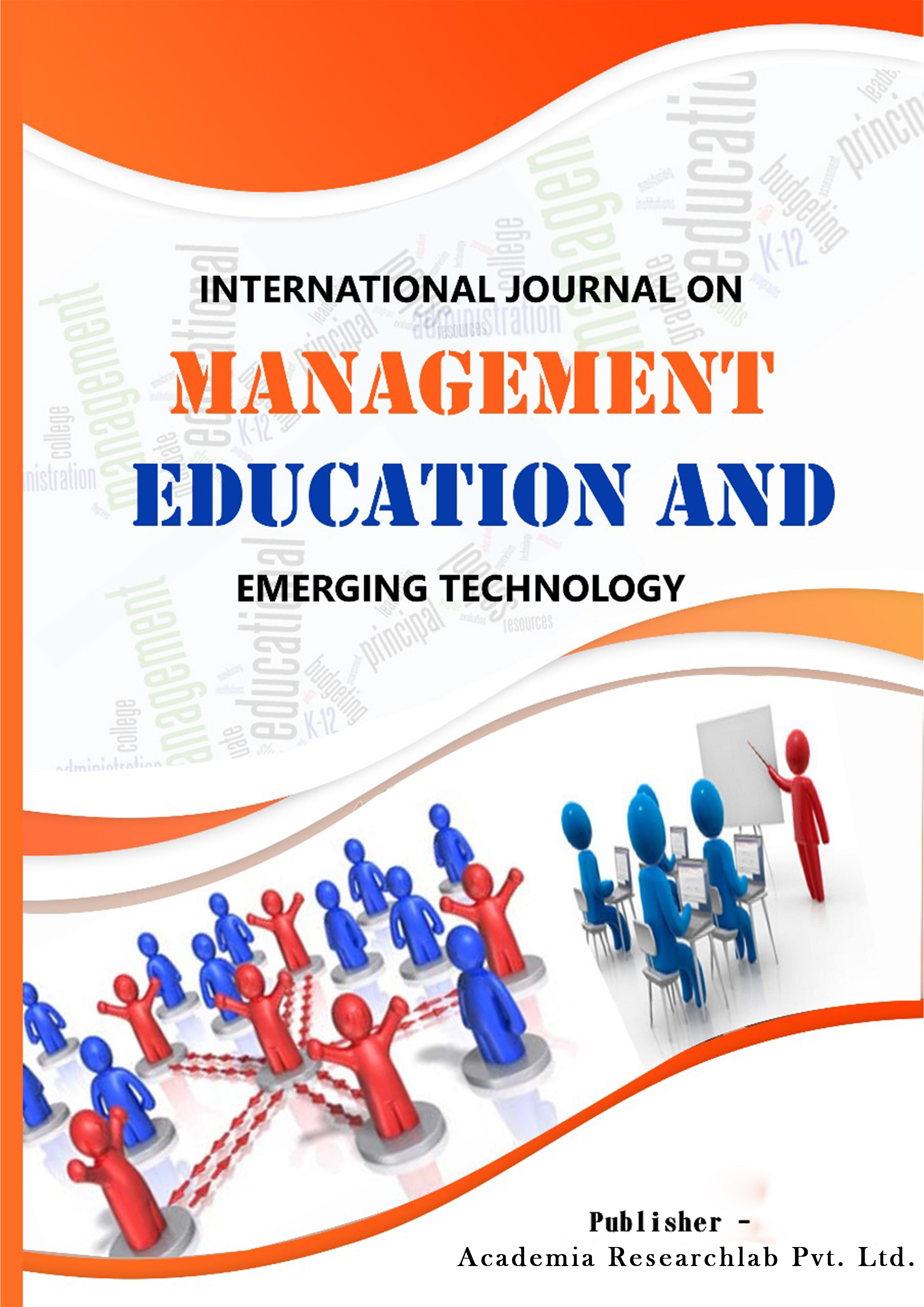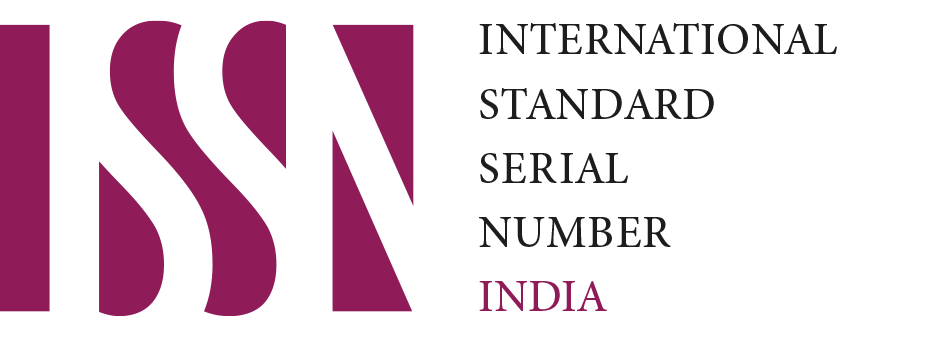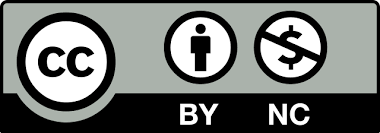Education Management In China: Is It Culture Or Performance?
Keywords:
Sports Psychology, Athlete Performance, Psychological Factors, Culture, ChinaAbstract
This research explores the often-overlooked psychological factors influencing athletes’ performance in China’s team sports. While physical attributes are recognized contributors to success, this study focuses on the psychological dimensions that shape athlete performance. The investigation considers emotions, self-talk, self-efficacy, spirituality, goal orientation, and motivation as key variables, acknowledging their relevance to sports contexts. Moreover, the study explores how culture moderates the relationship between these psychological factors and performance, recognizing culture as a critical determinant of behaviour. Drawing from a comprehensive literature review, this research bridges the gap in sports psychology research specific to China and validates existing theories within the country’s unique cultural context. By shedding light on the psychological dynamics that impact athletes’ success, the study contributes to the broader field of sports science, offering insights for optimizing performance in team sports. Despite resource limitations for sports research in China, this study aims to provide valuable insights into the psychological factors that shape athletes’ achievements
References
Anderson, C. (1976). oping behavior as intervening mechanisms in the inverted U-Stress performance relationship. Journal of applied psychology , 54, 42-9.
Apple, K. (1993). The antecedents and the concequences of multidimentional cohesion throughout a intercollegiate baseball season. Unpublished Masters thesis . West Lafayette, IN: Purdae University.
Ashfaq, A., & Ramzan, M. (2013). Effects of Work stress on Employees Job Performance :A Study on Banking Sector of Pakistan. Journal of Business Management , 11 (6), 61-8.
Baron, R. A., & Richardson, D. (1994). Human aggression (2nd ed.). New York: Plenum.
Beauchamp, P., Haliiwell, W., Foumier, J., & Koestner, R. (1996). Effects of Cognitive-Behavioral Psychological Skills Training on the Motivation, Preparation, and Putting Performance of Novice Golfers. The Spon Psychologist , 10, 157-70.
Blount, B. (1984). The language of emotions: An ontogenetic perspective. Language Sciences , 6 (1), 129-56.
Borman, W. &. (1997). Task performance and contextual performance : The meaning for personnel selection research. Human Performance , 10, 99-109.
Boyatzis, R., & Kilb, D. (1995). From learning tyles to learning skills: the executive skill profile. Journal of Managerial psychology , 10 (5), 3-17.
Brown, C. (2014, March). American Psychological Association. Retrieved December 30, 2016, from APA web site: http://www.apa.org
Campbell, J. P., McCloy, R., Oppler, S. H., & S. C. (1993). A theory of performance. In E. Schmitt, W. Borman, & &. Associates, Personnel selection in organizations (pp. 37-70). San Francisco:: Jossey-Bass.
Cannon, W. (1927). Cannon, W. B. (1927) The James-Lange theory of emotion: A critical examination and an alternative theory. American Journal of Psychology , 39, 110-24.
Carron, A., Colman, M., Wheeler, J., & Steevens, D. (2002). Cohesion and performance in sports: A meta analysis. Journal of sports and exercise psychology , 24, 168-88.
Cerin, E. (2019). Anxiety versus fundamental emotions as predictors of perceived functionality of pre- competitive emotional states, threat, and challenge in individual sports. Journal of Applied Sport Psychology , 15, 223-38.
Cerin, E., Szabo, A., Hunt, N., & Williams, C. (2000). Temporal patterning of competitive emotions: A critical review. Journal of Sports Sciences , 18, 605-26.
Coon, D. (1998). Introduction to psychology (8th ed.). USA: Books/Cole Publishing Company.
Coon, D., & Mitterer, J. (2016). Introduction to Psychology: Gateways to Mind and Behavior. Boston: Cengage Learning.
Craft, L., Magyar, T., Becker, B., & Feltz, D. (2019). The relationship between the Competitive State Anxiety Inventory-2 and sport performance: A meta-analysis. Journal of Sport and Exercise Psychology , 25, 45-65.
Creswell, J. (2011). Research Design: Qualitative, Quantitative and Mixed Methods Approaches (2nd ed.).
Thousand Oaks, California: Sage Publications.
Cronbach, L. (1951). Coefficient alpha and the internal structure of tests. Psychomerika , 16, 297-334.
Edirisinghe, D., & Xiao, G. (2005). Psychological Analysis. Dehiwala, Beijing, China : Wathma Publishers. Feltz, D., Short, S., & Sullivan, P. (2008). Self efficacy in sport. International Journal of Sports Science and
Coaching , 3, 293-295.
Feltz, D., Short, S., & Sullivan, P. (2008). Self efficacy in sport working with athletes, teams and coaches.
International Journal of Sports Science and Coaching , 3, 293-295.
Folkman, S., & Lazarus, R. (1980). Ways of Coping Questionnaire Research edition. Pala Alto: Consulting Psychologists Press.
Frederisken, A., Lange, F., & Kriechel, B. (2012). Subjective Performance Evaluation and Employee careers.
The Institute for the Study of Labor (IZA) , 1-40.
Frijda, N. (1993). Moods, Emotion Episodes and Emotions. In N. Frijda, M. Lewis, & J. Haviland (Eds.), Handbook of Emotions (pp. 381–403). New York: Guilford Press.
Gezelsofloo, H., Parsian, H., Choorli, A., & Feizi, M. (2013). The Impact of Pre-Competition Anger on Self- Confidence and Success of Volleyball Players in Premier League and its Relation with Athletes’ Experience. J. Educ. Manage. Stud , 3 (3), 215-20.
Ghasemi, A., & Zahediasl, S. (2012). Normality Tests for Statistical Analysis: A Guide for Non-Statisticians.
International Journal of Endocrinology and Metabolism , 10 (2), 486-89.
Gould, D., Greenleaf, C., Guinan, D., & Chung, Y. (2002(b)). A Survey of U.S. Olympic Coaches: Variables Perceived to Have Influenced Athlete Performances and Coach Effectiveness. The Sport Psychologist
, 16, 229-50.
Hanin, Y. (2000). Emotions in sport. Champaign, IL: Human Kinetics.
Hatzigeorgiadis, A., Zourbanos, N., Mpoumpaki, S., & Theodorakis, Y. (2009). Mechanisms underlying the selftalk-performance relationship: the effects of motivational self-talk on self-confidence and anxiety. Psychology of Sport and Exercise , 10, 186-92.
Hume, D. (2012). Emotions and moods. Organizational Bahavior , 258-97.
Jamal, M. (1984). ob stress and job performance controversy: An empirical Assessment. Organizational behavior and human performance , 44, 601-19.
James, W. (1884). What is an emotion. Mind , 9, 188-205.
Jaworski, B., & Kohli, A. (1993). Market Orientation:Antecedents and consequences. Journal of Marketing , 57, 53-70.
Johnson, M. (2011). Gold rush: What makes an Olympic champion? London, UK: HarperSport.
Jones, M., Lane, A. B., Uphill, M., & Catlin, J. (2005). Developmnt and validation of sports emotion questionnaire. Journal of Sport and exercise psychology , 27, 407-31.
Jones, M., Lane, A., Bray, S., & Uphill, M. C. (2005). Development and Validation of the Sports Emotion Questionnaire. Journal of Sports & Exercise Psychology , 27, 407-31.
Jones, M., Meijen, C., McCarthy, P., & Sheffield, D. (2009). A Theory of Challenge and Threat States in Athletes. International Review of Sport and Exercise Psychology 2(2):161-180 , 2 (2), 161-180.
Kassinove, H., & Tafrate, R. (2006). Anger-related disorders: Basic issues, models and diagnostic considerations. In E. Feindler, & E. Feindler (Ed.), Anger-related disorders: A practitioner’s guide to comparative treatments (pp. 1-27). New York: Springer Publishing.
Keijsers, C., Schaufeli, W., LeBlanc, P., Zwerts, C., & Miranda, D. (1995). Performnace and burnout in intensive care unit. Work and stress , 9, 513-27.
Landin, D., & Hebert, E. (1999). The influence of self-talk on the performance of skilled female tennis players.
Journal of Applied Sport Psychology , 11, 263-282.
Latinjak, A., & Girona, U. (2012). The underlying structure of Emotions: A tri-dimentional model of core affect and emotion concepts for sports. Revista Iberoamericana de Psicología del Ejercicio y el Deporte , 7 (1), 71-87.
Lazarus, R. (1991). Emotion and Adaptation. New York: Oxford University Press.
Lazarus, R. (1993). Coping theory and research: Past, present, and future. Psychosomatic Medicine , 55, 234- 47.
Lazarus, R. (1994). Psychological stress in the workplac. In R. Crandall, & P. Perrewe, Occupational Stress: A Handbook (Vol. 39, pp. 24-29). New York: Taylor and Francis.
Lazarus, R. (1999). Stress and Emortion. New York,NY: Springer.
Lazarus, R. (2000). How emotions influence performance in competitive sports. The SportPsychologist , 14, 229-252.
Leveck, M., & Jones, C. (1996). The nursing practice environment, staff retention and quality of care. Research in nursing and care , 22 (3), 331-43.
Livingstone, C. (2008). Dictionary of Sport and Exercise Science and Medicine. Retrieved 05 18, 2017, from Dictionary of Sport and Exercise Science and Medicineweb site: http://medical- dictionary.thefreedictionary.com
Long, G., Selby, J., & Calhoun, L. (1980). Effects of Situational Stress and Sex on Interpersonal Distancep reference. Preference, Journal of Psychology: Interdisciplinary and Applied , 105 (2), 231-7.
McCarthy, P. (2011). Positive emotion in sport performance: current status and future directions. International Review of Sport and Exercise Psychology , 4 (1), 5-69.
McGrath, J. (1970). Major methodological issues. In J. McGrath, Social and psychological factors in stress (pp. 19-49). New York: Rinehart & Winston.
McGrath, J. (1982). Methodological problems in research on stress. In H. Krohne, & L. Laux, Achievement, Stress, and Anxiety (pp. 19-48). Washington, DC: Hemisphere.
McNair, D., Lorr, M., & Droppleman, L. (1971). Profile of mood state mannual. San Diego: Educational and Industrial Testing service.
Morgan, W. (1985). Selected psychological factors limiting performance: A mental health model. Limits of human performance , 70-80.
Motowidlo, S., Borman, W., & Schmit, M. (1997). A theory of individual differences in task and contextual performance. Human Performance , 10, 71-83.
Mottaghi, M., Atarodi, A., & Rohani, Z. (2013). The relationship between coaches’ and athletes’ competitive anxiety, and their performance. Iran J Psychiatry Behav Sci , 7 (2), 68-76.
Myers, D., & Diener, E. (1995). Who is happy? Psychological Science , 6, 10-9.
Pervez, M. (2010). Impact of emotions on employees's job performance: An evidence of organizations in Pakistan. OIDA International Journal of Sustainable Development , 1 (5), 10-6.
Petchsawanga, P., & Duchon, D. (2012). Workplace Spirituality, Meditation, and Work performance. Journal of Management, Spirituality & Religion , 9 (2), 189- 208.
Rawland, D., & Lankveld, J. (2019). Anxiety and Performance in Sex, Sport, and Stage: Identifying Common Ground. Front. Psychol.
Ruiz, M., & Hanin, Y. (2011). Perceived impact of anger on performance of skilled karate athletes. Psychology of Sport and Exercise , 12, 242-9.
Schachter, S., & Wheeler, L. (1962). Epinephrine, chlorpromazine, and amusement. Journal of Abnormal and Social Psychology , 65, 121-28.
Seligman, M., & Csikszentmihalyi, M. (2000). Positive psychology: An introduction. American Psychologist , 55, 5-14.
Selye, H. (1976). The Stress of Life. New York: McGraw-Hill.
Sincero, S. (2012, February 12). Explorable.com. Retrieved January 23, 2017, from Explorable.com web site: https://explorable.com/how-does-stress-affect-performance
Singh, R. (2017). Stress Role in Sports Performance of Athlete’s. International Journal of Physical Education, Sports and Health , 4 (3), 278-280.
Sofia, R., & Cruz, J. (2017). Unveiling anger and aggression in sports: The effects of type of sport, competitive category and success level. Journal of Sport Psychology , 26 (2), 21-28.
Spielberger, C. (1991). State-Trait Anger Expression Inventory (STAXI). Odessa, FL: Psychological Assessment Resources.
Spielberger, C., Jacobs, G., Russell, S., & Crane, R. (1983). Assessment of Anger: the State-Trait Anger Scale. In J. Butcher, & C. Spielberger (Ed.), Advances in Personality Assessment (Vol. 2). Hillsdale, NJ: Erlbaum.
Valle, A., & Cabanach, J. N. (2019). Multiple goals, motivation and academic learning. British Journal of Educational Psychology , 73, 71-87.
Weinberg, R. (1988). The mental advantage: Developing your psychological skills in tennis. Champaign, IL: Human Kinetics.
Weinberg, R. S., & Gould, D. (2019). Foundations of sport and exercise psychology. Champaign, IL: Human Kinetics.
Weinberg, R. S., Smith, J., Jackson, A., & Gould, D. (1984). Effect of association, dissociation, and positive self-talk strategies on endurance performance. Canadian Journal of Applied Sport Sciences , 9, 25-32.
Weiss, H., & Cropanzano, R. (1996). Affective event theory: A theoritical discussion of the structure, causes and concequences of affective experience at work. In B. Staw, & L. Cummings, Research in organizational behavior (Vol. 18, pp. 17-19). Greenwich, CT: JAI Press.
Weiss, H., & Cropanzano, R. (1996). Research in Organizational behavior (Vol. 18). (B. Staw, & L. Cummings, Eds.) London, England: Jai Press Inc.
Weiss, H., & Cropanzano, R. (1996). Research in organizational behavior: An annual series of analytical essays and critical reviews. In B. Staw, L. Cummings, H. Weiss, & R. Cropanzano (Eds.), Affective Events Theory: A theoretical discussion of the structure, causes and consequences of affective experiences at work. (Vol. 18, pp. 1-174). US: Elsevier Science, JAI Press.
Westman, M., & Eden, D. (1996). The inverted U relational between stress and performance: A field Study.
Work and Stress , 10, 165-73.
Yerkes, R., & Dodson, J. (1908). The Relation Of Strength Of Stimulus To Rapidity Of Habit-Formation.
Journal of Comparative Neurology and Psychology , 18, 459-82.
Additional Files
Published
How to Cite
Issue
Section
License
Copyright (c) 2024 International Journal on Management Education and Emerging Technology(IJMEET)

This work is licensed under a Creative Commons Attribution-NonCommercial-NoDerivatives 4.0 International License.





